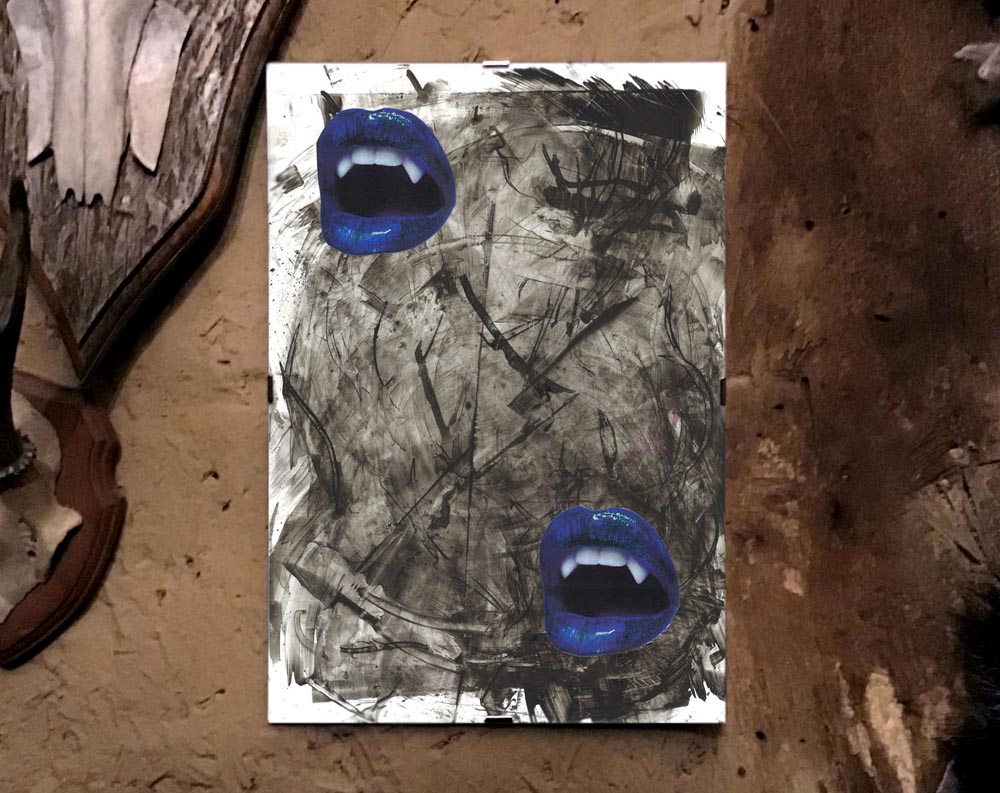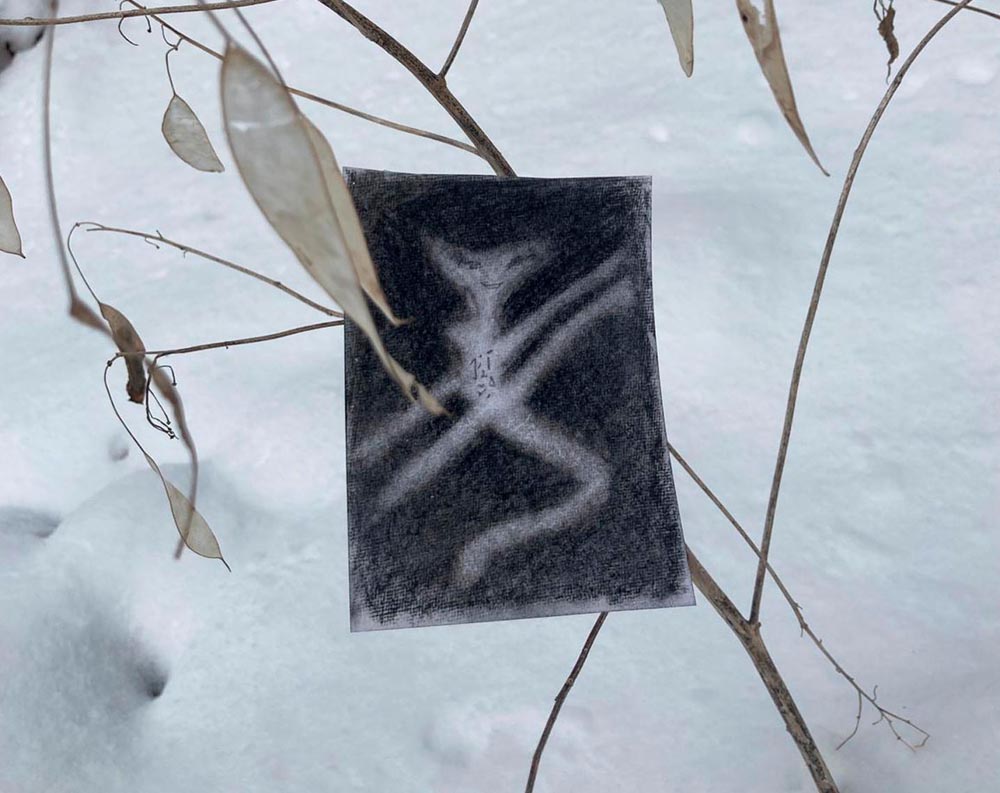OFLUXO
Quince Moon
Ernst Yohji Jaeger
At Croy Nielsen (Vienna, Austria)
reviewed by Philip Hinge
February, 2021
The paintings in Ernst Yohji Jaeger’s, “Quince Moon”, at Croy Nielsen (Vienna, Austria), depict a quiet and contemplative world. The often-androgynous figures populating the eleven canvases are caught somewhere between a daydream and coping from unseen distress. Jaeger conjures these low-key dramas through scumbled surfaces, choosing to stage them on sparsely forested shorelines or in shallow windowed interiors. These sites are specific but not placeable. Each seemingly ordinary scenario is slowly flooded by a quasi-surrealness which seeps up assiduously through the weave of the canvas.
Jaeger’s painted world emanates the feeling of being lonely despite being surrounded by people. That introversion is filled with the artist’s symbols and magical thinking. In Untitled (seated) two figures at opposing edges of the canvas are sitting at a table. They are avoiding eye contact, both with each other and the viewer. These social sensitivities imply the effects of relational fatigue. Behind the figures, a modest glowing moon can be seen in the distance through the window. The seeming insignificance suggested by the moon’s scale is replicated by a small ball, mid-bounce, on the table in the foreground. This moment of simulacrum upends the narrative and calls the contextual importance of each element into question. When the moon holds the same weight as a ball, which controls the tides?
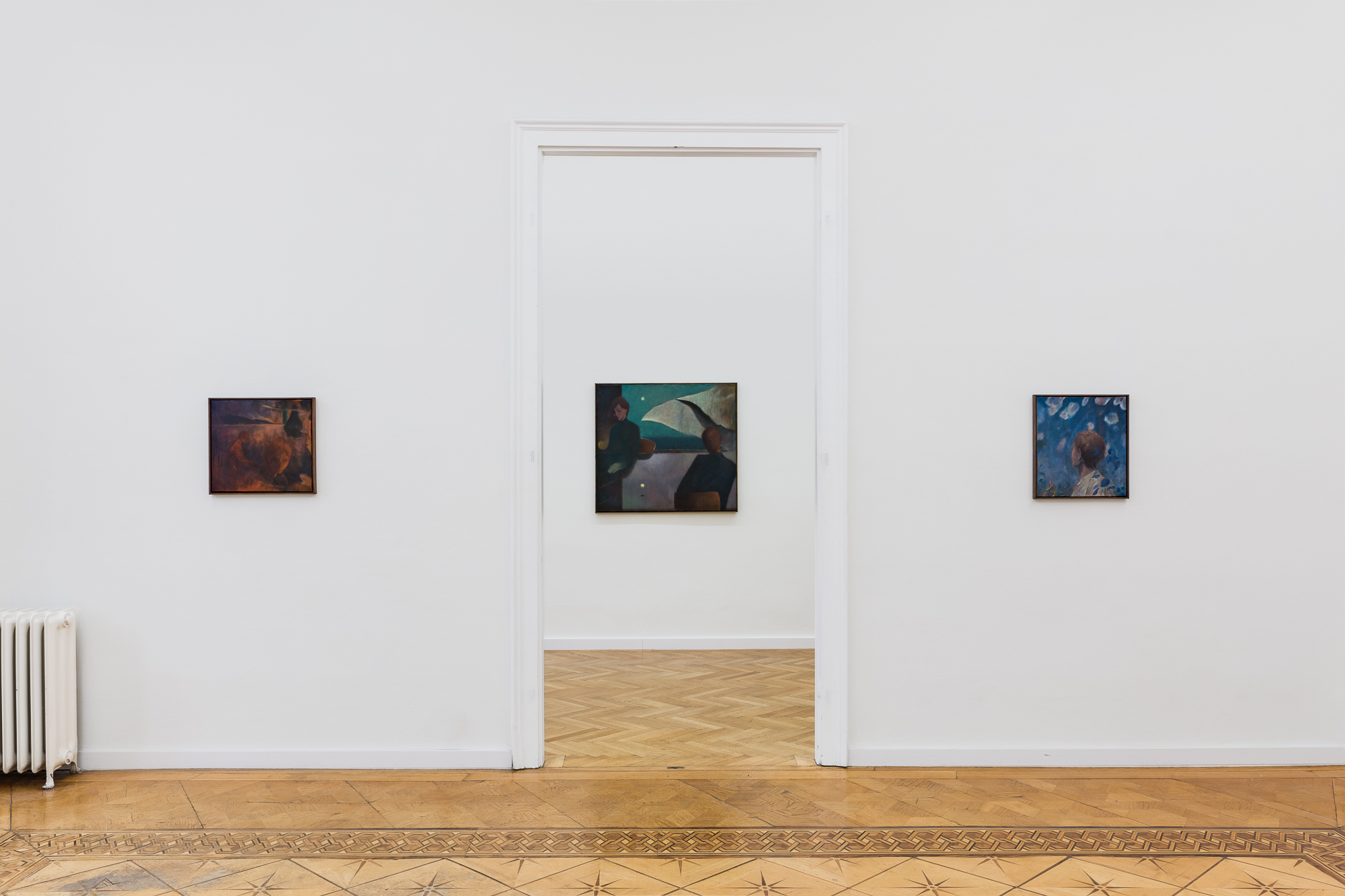
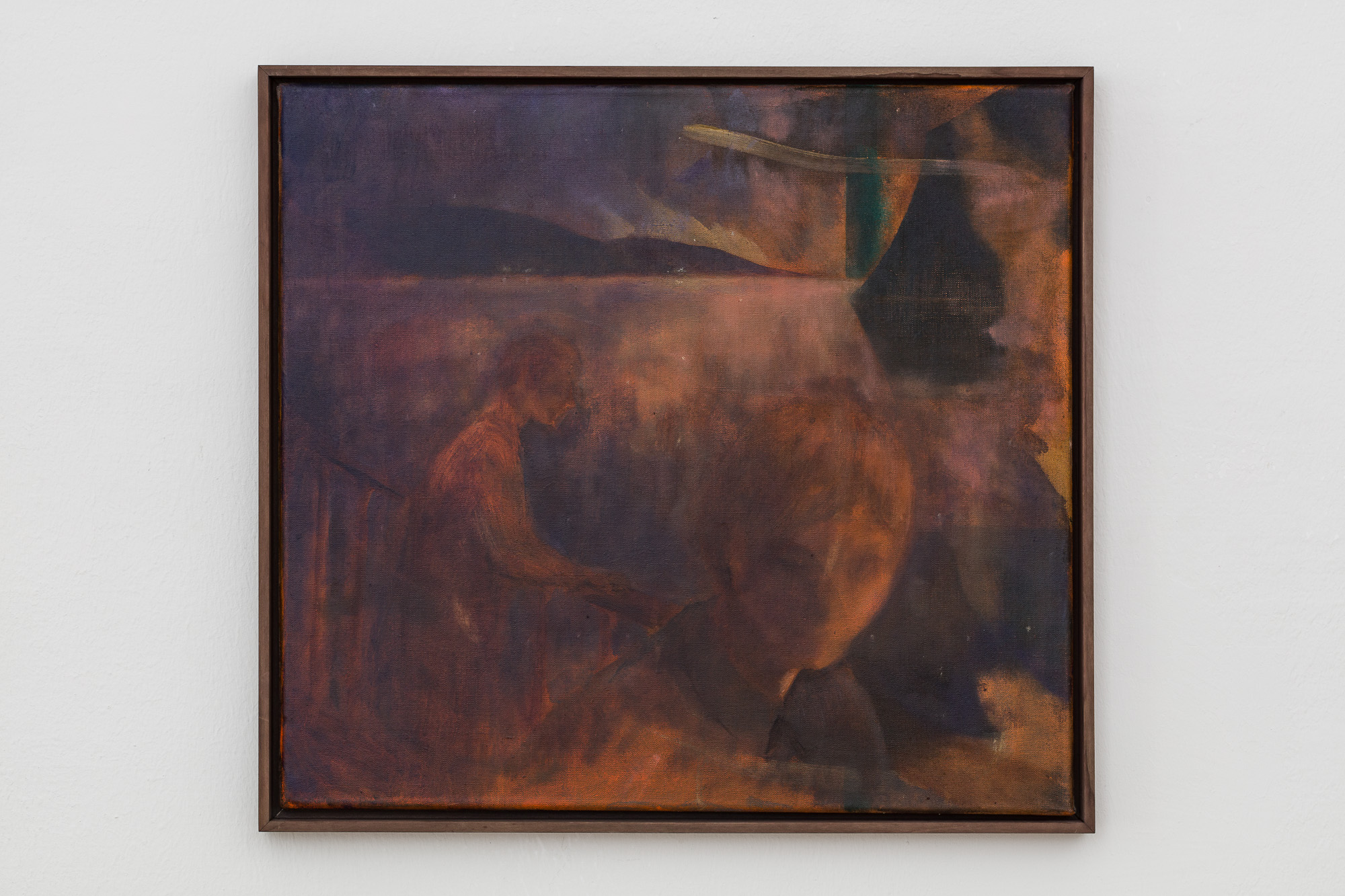
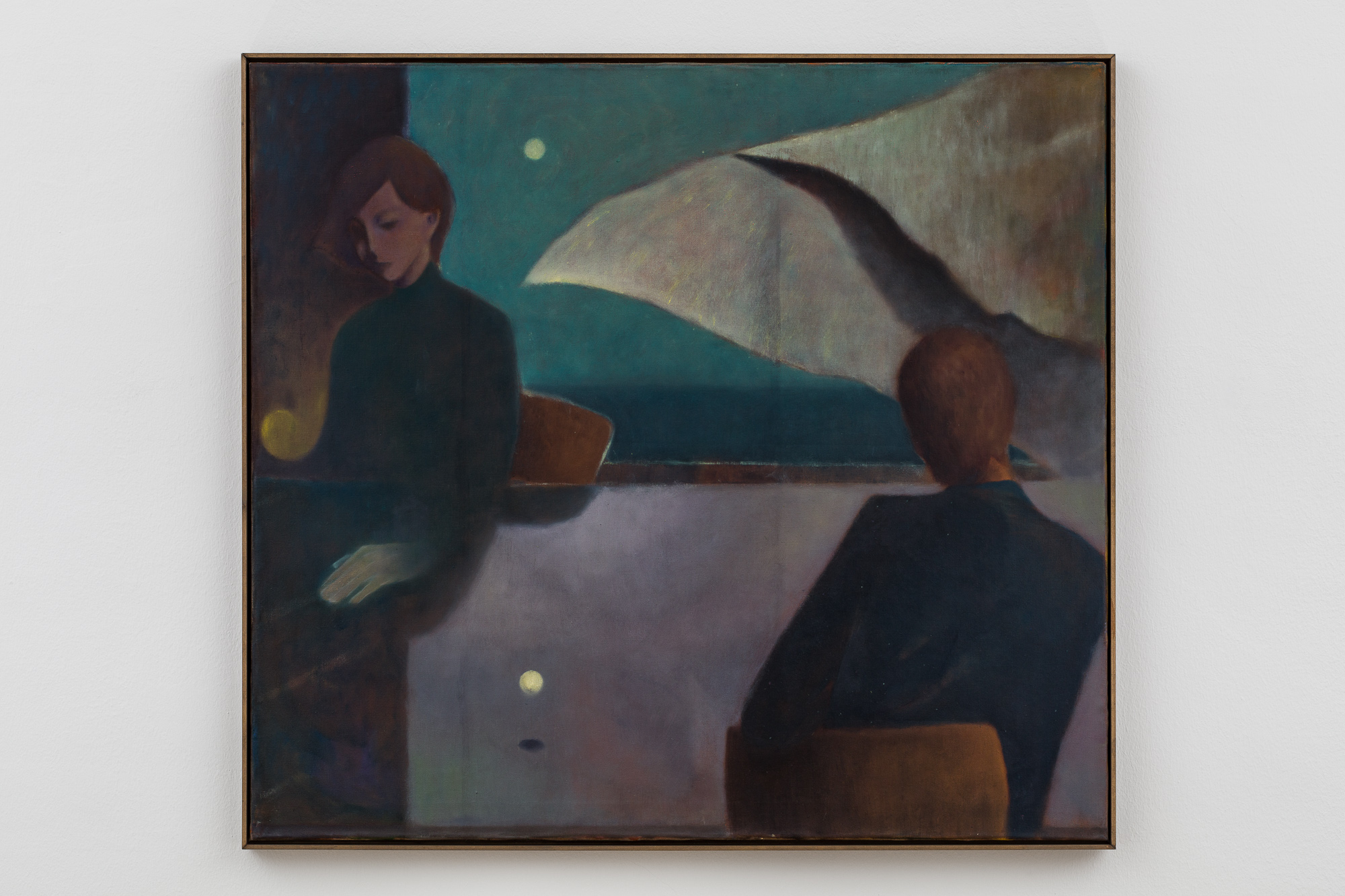
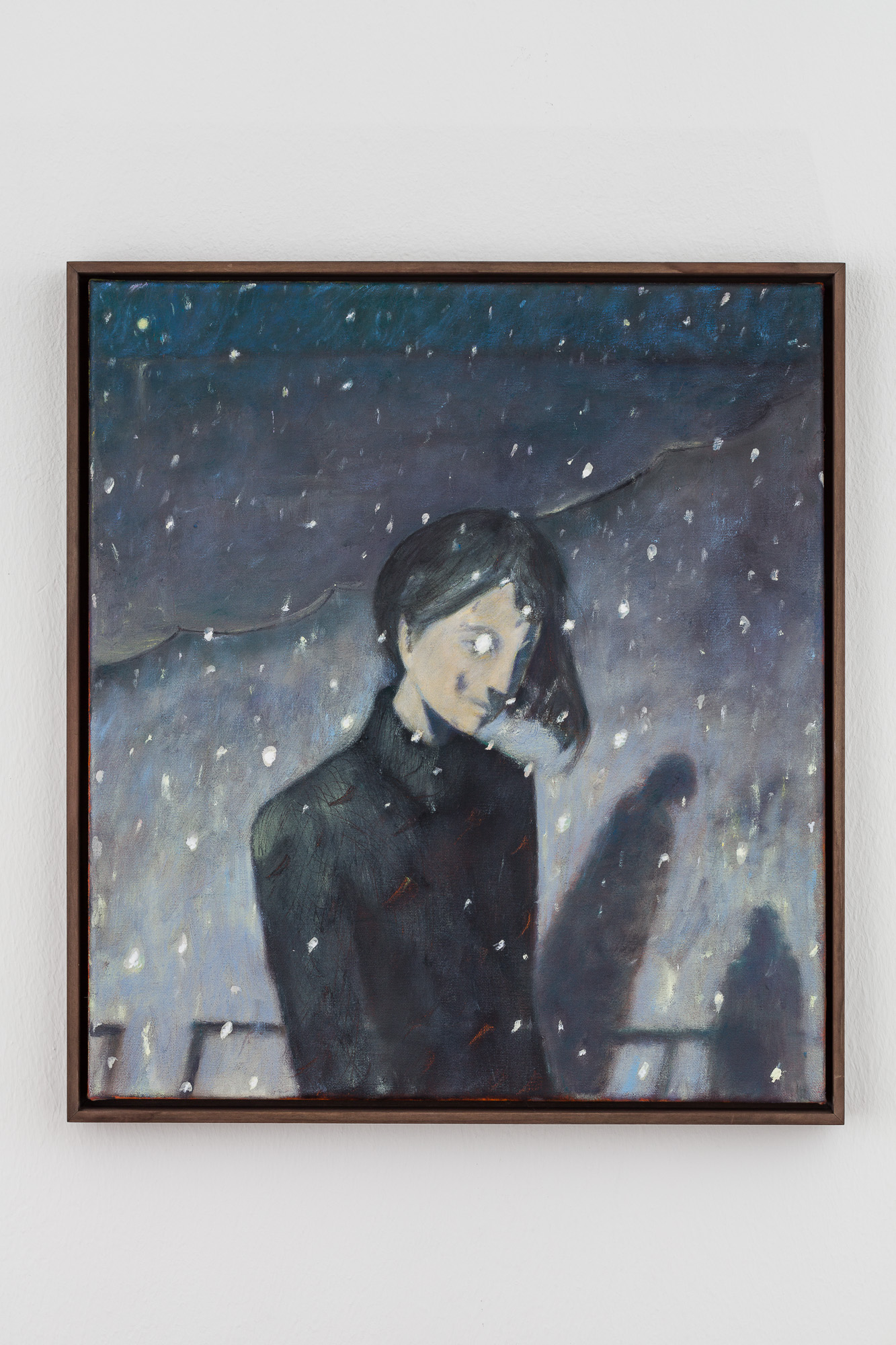
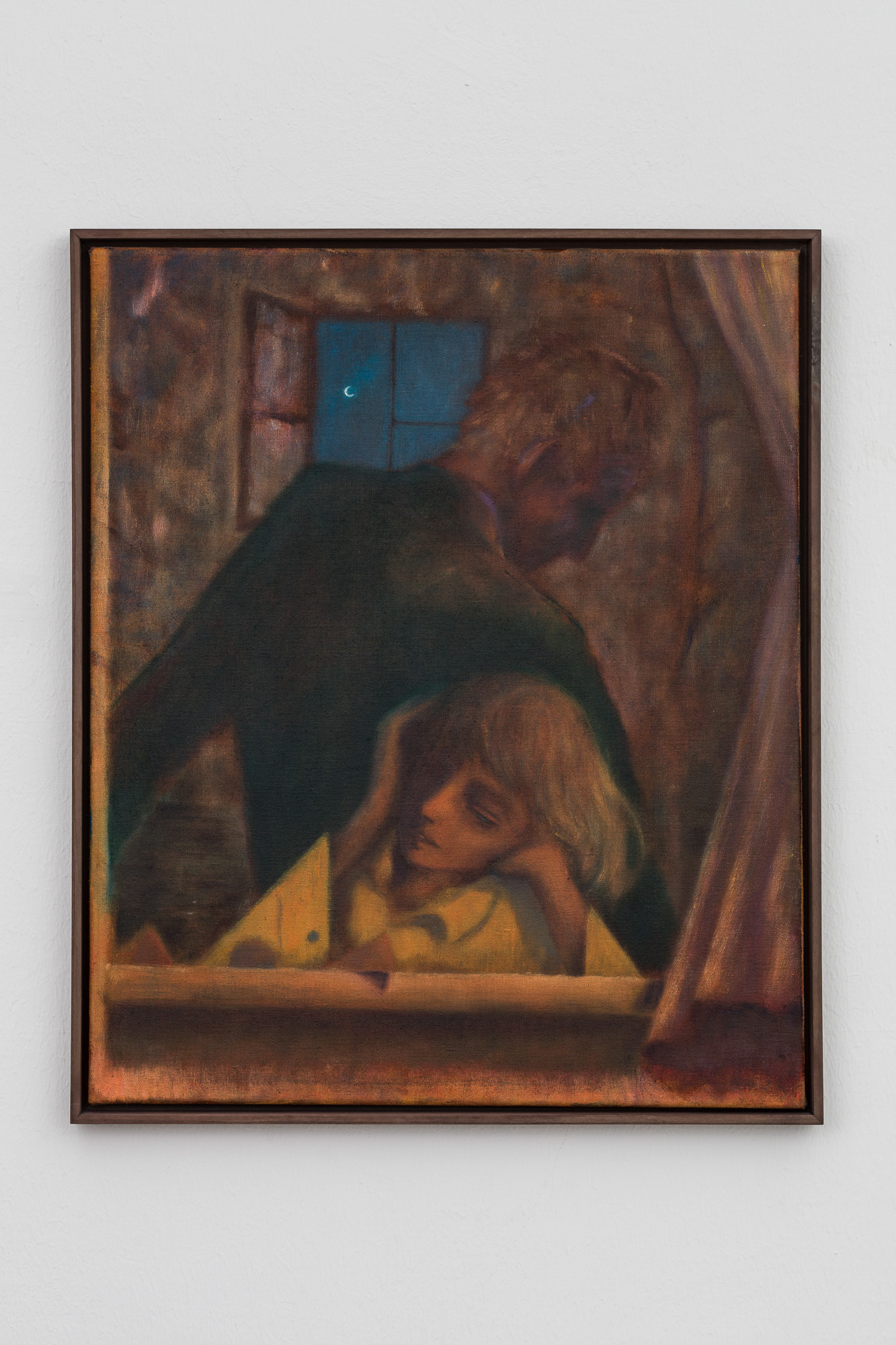
A layer of fog, the product of an artist slowly realizing an image through paint, adds to Jaeger’s innate ability to coalesce form and feeling. The absence between representational forms heightens the viewer’s awareness of what Jaeger is choosing to show.
These consistent sensibilities help the viewer fall into the rhythms and harmonies that exist across works. In Untitled (two windows) the figure in the foreground, leaning heavily on a windowsill while holding their head in both hands, is eclipsed by the large flat back of the figure directly behind them. The size of the man’s murky green coat in relation to the frontal figure implies the burden of a disproportionate relationship. The power dynamic is reversed in Untitled. Here, the large figure in the foreground peers knowingly away from their partner, whose small body shrinks into the distant haze of the landscape. Utilizing these visual hierarchies as a conveyance of inner psychology unsettles memories of Bonnard.
The representation of time is another key player in Jaeger’s cast. The majority of works portray some form of suspended action; snowflakes floating, a seagull flapping its wings, a head sinking. The anti-gravity crystalizes the moment, providing a commentary on the stillness of painting while also supporting the overarching otherworldly feeling. The central figure of Untitled (snow), who has a surrogate eye made by snow, is approached by a small prescient shadow.
This stands as a singular departure from the other works where the coupling of figures or animals is depicted, not implied. The insinuation of the shadow directly narrates the viewer’s invasion into Jaeger’ self contained world. The moment of visitation is flattened, becoming a record of our trespass into this uniquely personal world. ●
OFLUXO is proudly powered by WordPress
